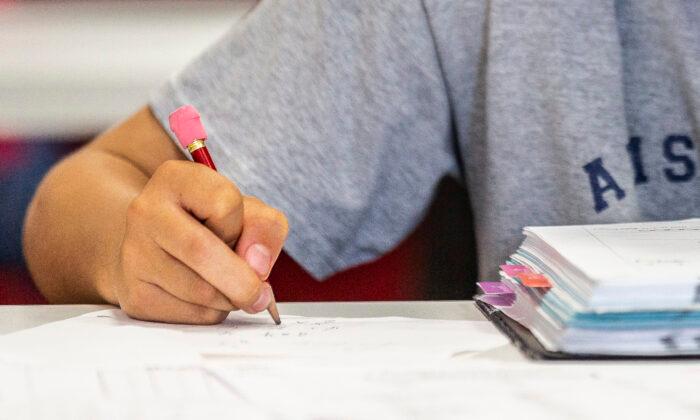The COVID-19 pandemic continues to impact academic progress in the United States even three years after its onset, with a study suggesting that students may need months of extra school to catch up to pre-pandemic levels.
“While the pandemic is now deemed over, the impacts on students based on two markers, achievement in reading and mathematics, are still apparent,” the study reads.
The study reveals that achievement gains fell short of pre-pandemic trends in most grades, with the exception of the youngest students, who made above-average achievement gains, defying this pattern.
“These data reiterate that recovery will not be linear, easy, or quick and we cannot take our foot off the gas pedal,” Karyn Lewis, co-author of the study, said in a press release.
Black and Hispanic students remained furthest from recovery and will need even more time to catch up, according to the study.
The NWEA said that most U.S. students would require an additional 4.5 months of mathematics instruction and 4.1 months of reading instruction to catch up to pre-COVID levels.
However, it emphasized that the amount of additional schooling cannot be compressed into a single year or achieved in a short-term intervention but rather will require “sustained effort over several years.”
Math, Reading Scores Plunged
The study echoes the findings of federal test results released last month that found math and reading scores among America’s 13-year-olds had fallen to their lowest levels in decades.
In the national sample of 13-year-old students, average math scores fell by nine points between 2020 and 2023. Reading scores fell by four points. The test, formally called the National Assessment of Educational Progress, was administered from October to December last year to 8,700 students in each subject.
Math and reading scores had been sliding before the pandemic, but the latest results show a precipitous drop that erases earlier gains in the years leading up to 2012. Scores on the math exam, which has been given since 1973, are now at their lowest levels since 1990. Reading scores are their lowest since 2004.
Especially alarming to officials were outsize decreases among the lowest-performing students. Students at all achievement levels saw decreases, but while stronger students saw slides of six to eight points, lower performing students saw decreases of 12 to 14 points, the results show.





